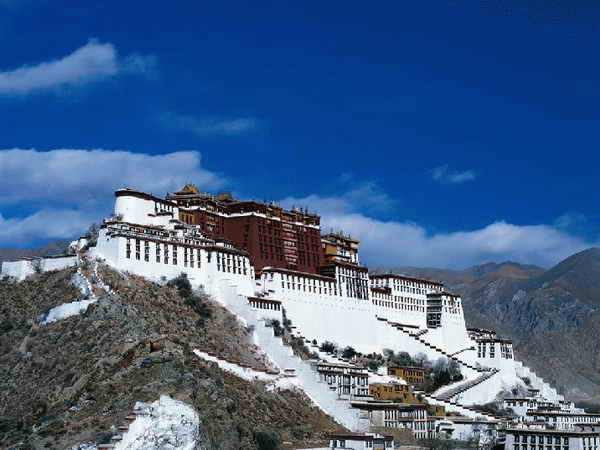Monday, November 09, 2009
The 5th Dalai Lama unified Tibet in mid-16th century
What are the different schools of Tibetan Buddhism?
Though there are several distinct schools, Tibetan Buddhism can be primarily divided into four main traditions: Nyingma, Kagyu, Gelug, and Sakya.
Nyingma is the oldest order formed by Indian sage Padmasambhava, who is often credited with spreading Buddhism to Tibet and Bhutan. In the Kagyu sect, the most famous subsect is Karma Kagyu headed by the Karmapa, whose principal seat, in exile, is the Dharma Chakra Centre at Rumtek Monastery in Sikkim. The third important school is Sakya, whose leaders are descendants of the royal Khon family.
The fourth major school is Gelug, whose spiritual head is the Ganden Tripa — an appointed office with the Dalai Lama as temporal head — who is selected on the basis of a reincarnation lineage. Successive Dalai Lamas ruled Tibet since the mid-16th century after the fifth Dalai Lama unified the country by defeating the rival sects. Tenzin Gyatso, the 14th Dalai Lama, is the head of the Tibetan government in exile in Dharamsala, India.
Who is a tulku?
Traditionally, a tulku, also known as rinpoche, is considered to be a reincarnation of a Buddhist master who has vowed to take rebirth to help all living beings attain enlightenment. However, some scholars oppose the use of the word rebirth as it is believed that there is a mindstream (moment-to-moment continuity of consciousness) emanation of the first master, which is based on the idea that exemplary figures might remain within the human world as institutional teachers, manifesting from one lifetime to the next. The most famous example is the lineage of Dalai Lamas, while the oldest lineage of tulkus is that of the karmapas.
Tibet experts estimate that at present there are around 500 tulku lineages found across Tibet, Bhutan, northern India, Nepal, Mongolia, and the southwest provinces of China.
In December 1988, the Dalai Lama, the Council for Religious and Cultural Affairs in Dharamsala and the Central Institute for Higher Tibetan Studies in Sarnath, organized a conference attended by more than 300 tulkus. While most tulkus were ethnic Tibetans with a few having Mongol ethnicity, in modern times, westerners are also identified as tulkus. The most famous of them are Tenzin Osel, who was born to Spanish parents, and Hollywood actor Steven Seagal, who has been recognized by Tibetan lama Penor Rinpoche as a reincarnation of 17th century tulku Chungdrag Dorje.
How are the tulkus identified?
In the case of the Dalai Lama, the tulku lineage is interlinked with the panchen lama (panchen lama traditionally recognizes the new incarnation of a Dalai Lama and vice versa). However in other cases, the potential candidates are evaluated by other respected lamas. The evaluation process often involves tests like checking whether the child can recognize acquaintances or possessions of his previous reincarnation or answer questions only known to his former-life experience.
Sikkim News,News on Sikkim,News of Sikkim,
dalai lama,
tibet,
tibetan buddhism,
Tibetans
Subscribe to:
Post Comments (Atom)



No comments:
Post a Comment